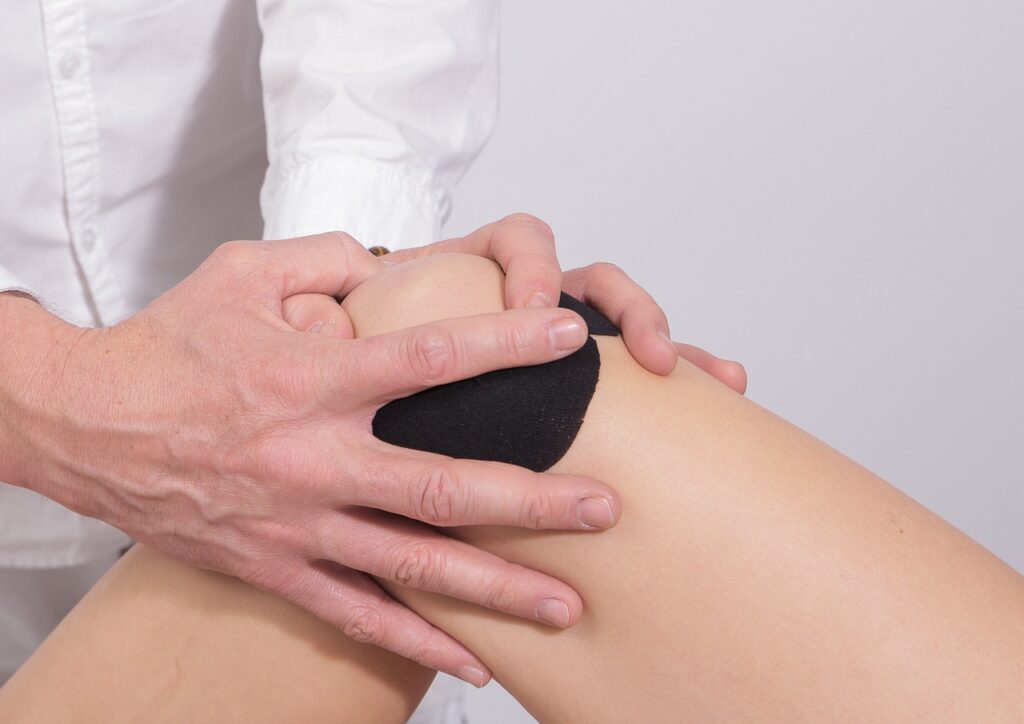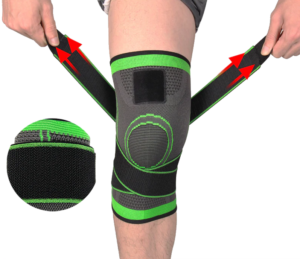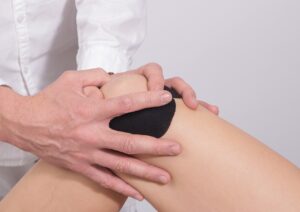
If you’re someone who deals with knee pain and is looking for ways to manage it, then you’ve come to the right place! In this article, we will be exploring the world of compression knee sleeves and how they can be a comprehensive solution for your knee pain. Whether you’re an athlete or someone with a sedentary lifestyle, compression knee sleeves can provide the support and relief you need. From the benefits they offer to the factors to consider when choosing the right one, this guide has got you covered. So, buckle up and get ready to discover a game-changer in knee pain management!

This image is property of pixabay.com
Overview of Knee Pain
Knee pain is a common issue that affects individuals of all ages and lifestyles. Whether you are an athlete, an office worker, or a retiree, knee pain can significantly impact your daily activities and quality of life. Understanding the causes, types, and symptoms of knee pain is essential in finding an effective solution for managing and alleviating this discomfort.
Causes of Knee Pain
Knee pain can stem from various factors, including injuries, medical conditions, and overuse. Some common causes of knee pain include:
- Injuries: Injuries such as ligament tears, meniscus tears, and fractures can result in acute knee pain. These injuries often occur during sports activities, accidents, or strenuous physical activities.
- Medical Conditions: Certain medical conditions, such as arthritis (including osteoarthritis and rheumatoid arthritis), tendinitis, bursitis, and gout, can lead to chronic knee pain. These conditions often involve inflammation and cartilage degeneration.
- Overuse: Repetitive motions, excessive strain, or prolonged standing can lead to overuse injuries and result in knee pain. This is commonly seen in individuals who participate in activities that require repetitive knee movements, such as running or squatting.
Types of Knee Pain
Knee pain can manifest in different ways, depending on the underlying cause and location of the discomfort. Here are some common types of knee pain:
- Anterior knee pain: This type of knee pain is characterized by discomfort at the front of the knee, just below the kneecap. It is often attributed to conditions like patellofemoral pain syndrome or chondromalacia patella.
- Medial knee pain: If you experience pain on the inner side of your knee, you may be dealing with medial knee pain. This can be caused by conditions like medial meniscus tears, medial collateral ligament strains, or osteoarthritis.
- Lateral knee pain: Lateral knee pain refers to pain on the outer side of the knee. Conditions such as iliotibial band syndrome, lateral meniscus tears, or lateral collateral ligament sprains can contribute to this type of knee pain.
- Posterior knee pain: Pain at the back of the knee is known as posterior knee pain. It can be caused by conditions like Baker’s cyst, hamstring strains, or popliteus tendinitis.
Symptoms of Knee Pain
Knee pain can manifest differently in each individual, but common symptoms include:
- Pain: The most obvious symptom is pain in or around the knee joint. The intensity and location of the pain can vary depending on the cause and severity of the issue.
- Swelling: Inflammation and swelling often accompany knee pain. The affected area may appear swollen, feel warm to the touch, and show signs of redness.
- Stiffness: Knee pain can lead to stiffness in the joint, making it challenging to move the knee freely.
- Weakness: Some individuals may experience weakness or instability in the knee, making it challenging to bear weight or engage in physical activities.
Now that you have a better understanding of knee pain, let’s explore how compression knee sleeves can assist in managing and alleviating this discomfort.
Introduction to Compression Knee Sleeves
What are Compression Knee Sleeves?
Compression knee sleeves are therapeutic garments designed to provide support, stability, and compression to the knee joint. They are commonly made from elastic materials and are worn snugly around the knee area.
How Compression Knee Sleeves Work
Compression knee sleeves work by applying gentle pressure on the knee joint, surrounding muscles, tendons, and ligaments. This compression helps to improve blood circulation, reduce inflammation and swelling, and provide support to the knee structures.
Benefits of Compression Knee Sleeves
Compression knee sleeves offer several benefits for individuals struggling with knee pain. Some key advantages of using compression knee sleeves include:
- Pain Relief: The compression provided by knee sleeves can help alleviate pain by reducing pressure and providing stability to the knee joint.
- Support and Stability: Compression knee sleeves offer additional support to the knee structures, helping to prevent excessive movements, stabilize the joint, and reduce the risk of injuries or further damage.
- Improved Circulation: The compression promotes blood flow, delivering oxygen and nutrients to the knee, which can aid in healing and recovery.
- Reduced Swelling and Inflammation: By applying pressure to the knee, compression knee sleeves can help reduce swelling and inflammation, providing relief from discomfort.
- Enhanced Performance: Athletes and active individuals can benefit from the increased proprioception provided by compression knee sleeves. This can improve balance, agility, and overall performance during physical activities.
Now that you understand the basics of compression knee sleeves, it’s important to know how to choose the right one for your specific needs.

This image is property of pixabay.com
Choosing the Right Compression Knee Sleeve
Consulting with a Healthcare Professional
When considering compression knee sleeves, it is always advisable to consult with a healthcare professional, such as a doctor or physical therapist. They can assess your condition, provide valuable guidance, and recommend the most suitable compression level and size for your specific needs.
Understanding Your Knee Pain
To choose the right compression knee sleeve, it is important to have a clear understanding of the cause and nature of your knee pain. Identifying the specific areas of discomfort, the severity of pain, and any underlying medical conditions can help guide your choice.
Considering the Compression Level
Compression knee sleeves come in various compression levels, ranging from mild to firm. The appropriate compression level will depend on factors such as your pain level, the severity of your condition, and any recommendations from your healthcare professional.
Choosing the Appropriate Size
To ensure optimal comfort and effectiveness, it is crucial to select the right size of compression knee sleeve. Most manufacturers provide sizing charts and guidelines to assist in finding the right fit, typically based on measurements of the circumference of your thigh and calf.
Once you have chosen and obtained the appropriate compression knee sleeve, it’s time to learn how to wear and properly care for it.
Wearing Compression Knee Sleeves
Putting on Compression Knee Sleeves
To put on your compression knee sleeves, follow these steps:
- Start by turning your knee sleeve inside out.
- Insert your foot into the open end of the sleeve and gently pull it up over your calf.
- Gradually slide the sleeve up over your knee, ensuring it covers the entire knee joint.
- Adjust the sleeve so that it feels snug but not overly tight or constricting.
Proper Fit and Positioning
To ensure a proper fit and positioning of your compression knee sleeves, consider the following tips:
- The knee sleeve should fit snugly around your knee joint, providing support without causing discomfort or circulation restriction.
- Make sure the knee sleeve is positioned correctly, with the kneecap centered within the opening of the sleeve.
- Avoid any wrinkles or folds in the fabric, as they could cause irritation or discomfort.
Wearing Instructions
It is generally recommended to wear compression knee sleeves during periods of physical activity or when experiencing knee pain. However, each individual’s needs may vary, so it is best to consult with your healthcare professional for personalized guidance on how often and when to wear your knee sleeves.
Now let’s explore how compression knee sleeves can effectively manage knee pain and aid in the recovery process.

This image is property of pixabay.com
Managing Knee Pain with Compression Knee Sleeves
Reducing Inflammation and Swelling
One of the key benefits of compression knee sleeves is their ability to reduce inflammation and swelling around the knee joint. The compression provided by the sleeves helps to improve blood circulation and lymphatic drainage, facilitating the removal of excess fluid and reducing swelling.
Supporting the Knee Joint
Compression knee sleeves offer valuable support to the knee joint, helping to stabilize and enhance its functionality. They can assist in preventing excessive movements that can exacerbate pain, strain, or further injury. The additional support can be particularly beneficial for individuals with ligament or meniscus injuries.
Enhancing Blood Circulation
Proper blood circulation is essential for healing and recovery. Compression knee sleeves promote blood flow to the knee area, delivering oxygen and nutrients to the tissues. This can aid in reducing pain, inflammation, and promoting tissue repair.
Promoting Faster Recovery
By reducing inflammation, providing support, and improving blood circulation, compression knee sleeves can contribute to a faster recovery process. Whether you are rehabilitating from an injury or managing a chronic condition, compression knee sleeves can help optimize the healing process and enhance overall recovery.
Now that you understand how compression knee sleeves can assist in managing knee pain, it’s crucial to know how to properly care for them to ensure their longevity and effectiveness.
How to Care for Compression Knee Sleeves
Cleaning and Maintenance
To keep your compression knee sleeves clean and in good condition, follow these tips:
- Hand wash your knee sleeves with mild soap and lukewarm water. Avoid using harsh chemicals or hot water, as they can damage the fabric.
- Gently squeeze and rinse the sleeves, making sure to remove any soap residue.
- Dry your knee sleeves by laying them flat in a well-ventilated area. Avoid direct sunlight or high heat sources, as they can cause shrinkage or damage.
Replacing Old or Damaged Sleeves
Over time, compression knee sleeves may lose their elasticity or become worn out. It is important to regularly inspect your sleeves for any signs of damage, such as tears, holes, or excessive stretching. If your knee sleeves no longer provide adequate compression or support, it may be time to replace them with a new pair.
While compression knee sleeves can be highly effective in managing knee pain, it is essential to be aware of certain precautions and considerations.
Precautions and Considerations
Consultation with Healthcare Professional
Always consult with a healthcare professional before incorporating compression knee sleeves into your pain management routine, especially if you have underlying medical conditions or are recovering from a specific injury. They can provide personalized advice and guidance based on your unique situation.
Avoiding Overuse
While compression knee sleeves provide valuable support, it is important not to rely solely on them for pain management. It is essential to address the root cause of your knee pain and implement a comprehensive approach that may include rest, rehabilitation exercises, and other treatment methods.
Avoiding Allergies or Irritation
Some individuals may experience skin allergies or irritation when wearing compression knee sleeves. If you notice any discomfort, redness, or itching, discontinue use and consult with your healthcare professional for alternative options.
Adjusting Compression Level
The appropriate compression level may vary depending on your pain level, the severity of your condition, and any recommendations from your healthcare professional. It is crucial to ensure that the compression level is not too high or too low, as this can affect the effectiveness and comfort of the knee sleeves.
In addition to utilizing compression knee sleeves, incorporating specific exercises and stretches into your routine can further aid in knee pain relief and strengthen the surrounding muscles.
Exercises and Stretches for Knee Pain Relief
Quad Sets
Quad sets help strengthen the muscles on the front of your thigh (quadriceps). To perform this exercise:
- Sit on the floor with your legs extended in front of you.
- Tighten the muscles on the front of your thigh of one leg and press the back of your knee into the floor.
- Hold for 5 to 10 seconds, then release.
- Repeat this exercise for 10 to 15 repetitions on each leg, gradually increasing the hold time as you become stronger.
Straight Leg Raises
Straight leg raises target the muscles on the front of your thigh (quadriceps) and can be performed in the following steps:
- Lie flat on your back with one leg extended and the other bent at the knee.
- Tighten the muscles on the front of your thigh of the extended leg and lift it off the ground.
- Hold for 5 to 10 seconds, then slowly lower it back down.
- Perform 10 to 15 repetitions on each leg, gradually increasing the hold time and repetitions as your strength improves.
Hamstring Curls
Hamstring curls primarily engage the muscles at the back of the thigh (hamstrings). Follow these steps to perform hamstring curls:
- Stand with your feet shoulder-width apart, maintaining a slight bend in your knees.
- Lift one foot off the ground, bending your knee and bringing your heel toward your buttock.
- Hold for a few seconds, then lower your foot back down.
- Repeat this exercise for 10 to 15 repetitions on each leg, gradually increasing the number of repetitions as you progress.
Wall Squats
Wall squats target your quadriceps, hamstrings, and buttock muscles. Here’s how to perform this exercise:
- Stand with your back against a wall, feet shoulder-width apart, and a slight distance away from the wall.
- Slowly slide down the wall until your knees are bent at a 90-degree angle, as if you are sitting in an imaginary chair.
- Hold this position for 10 to 30 seconds, then slowly stand back up.
- Perform 10 to 15 repetitions, gradually increasing the hold time and repetitions as your strength improves.
Calf Raises
Calf raises focus on the muscles in your calves. Follow these steps to perform calf raises:
- Stand with your feet shoulder-width apart, placing your hands on a stable surface, such as a wall or chair, for support.
- Lift your heels off the ground, rising onto the balls of your feet.
- Hold for a few seconds, then lower your heels back down.
- Repeat this exercise for 10 to 15 repetitions, gradually increasing the number of repetitions as you progress.
Alongside these exercises, there are additional pain management techniques that can complement the use of compression knee sleeves.
Additional Pain Management Techniques
Heat Therapy
Applying heat to the affected knee can help relieve pain and stiffness. You can use a heating pad, warm towel, or take a warm bath to provide soothing heat therapy. Be cautious not to apply excessive heat or leave heat sources unattended to avoid burns or injuries.
Cold Therapy
Cold therapy, such as applying ice packs or cold compresses to the knee, can help reduce inflammation and numb the area, providing temporary pain relief. Ensure that the ice or cold pack is wrapped in a cloth or towel to protect your skin from direct contact and avoid applying cold therapy for more than 20 minutes at a time.
Physical Therapy
Working with a physical therapist can be beneficial in managing knee pain. They can customize a treatment plan that includes targeted exercises, manual therapy, and other modalities to address your specific needs and aid in recovery.
Medications
For severe or chronic knee pain, over-the-counter nonsteroidal anti-inflammatory drugs (NSAIDs) such as ibuprofen or prescription medications may be recommended by your healthcare professional. These medications can help reduce pain and inflammation, but they should be used under the guidance of a healthcare professional and according to the recommended dosage.
In addition to the above methods, there are alternative approaches you can consider in managing knee pain.
Alternative Knee Pain Management Methods
Acupuncture
Acupuncture is an ancient Chinese practice that involves the insertion of tiny needles into specific points on the body. It is believed to help stimulate the body’s natural healing response and reduce pain. Consult with a licensed acupuncturist to explore acupuncture as a potential pain management method.
Transcutaneous Electrical Nerve Stimulation (TENS)
TENS therapy involves the use of low-level electrical currents applied to the skin via electrodes. These currents are believed to help block pain signals and provide temporary relief. TENS units can be purchased for home use, but it is advisable to consult with a healthcare professional to determine if this method is suitable for your condition.
Weight Management
Maintaining a healthy weight or losing excess weight can significantly reduce the strain and pressure on your knees. Excess weight can exacerbate knee pain and increase the risk of joint damage. It is advisable to consult with a healthcare professional or a registered dietitian to develop a safe and effective weight management plan.
By implementing a combination of these pain management techniques, including compression knee sleeves, targeted exercises, and alternative methods, you can effectively manage knee pain and improve your overall well-being.
Remember, it is always essential to consult with a healthcare professional for personalized advice and guidance tailored to your specific needs. With proper care, support, and a comprehensive approach, you can successfully manage knee pain and regain your mobility and quality of life.





